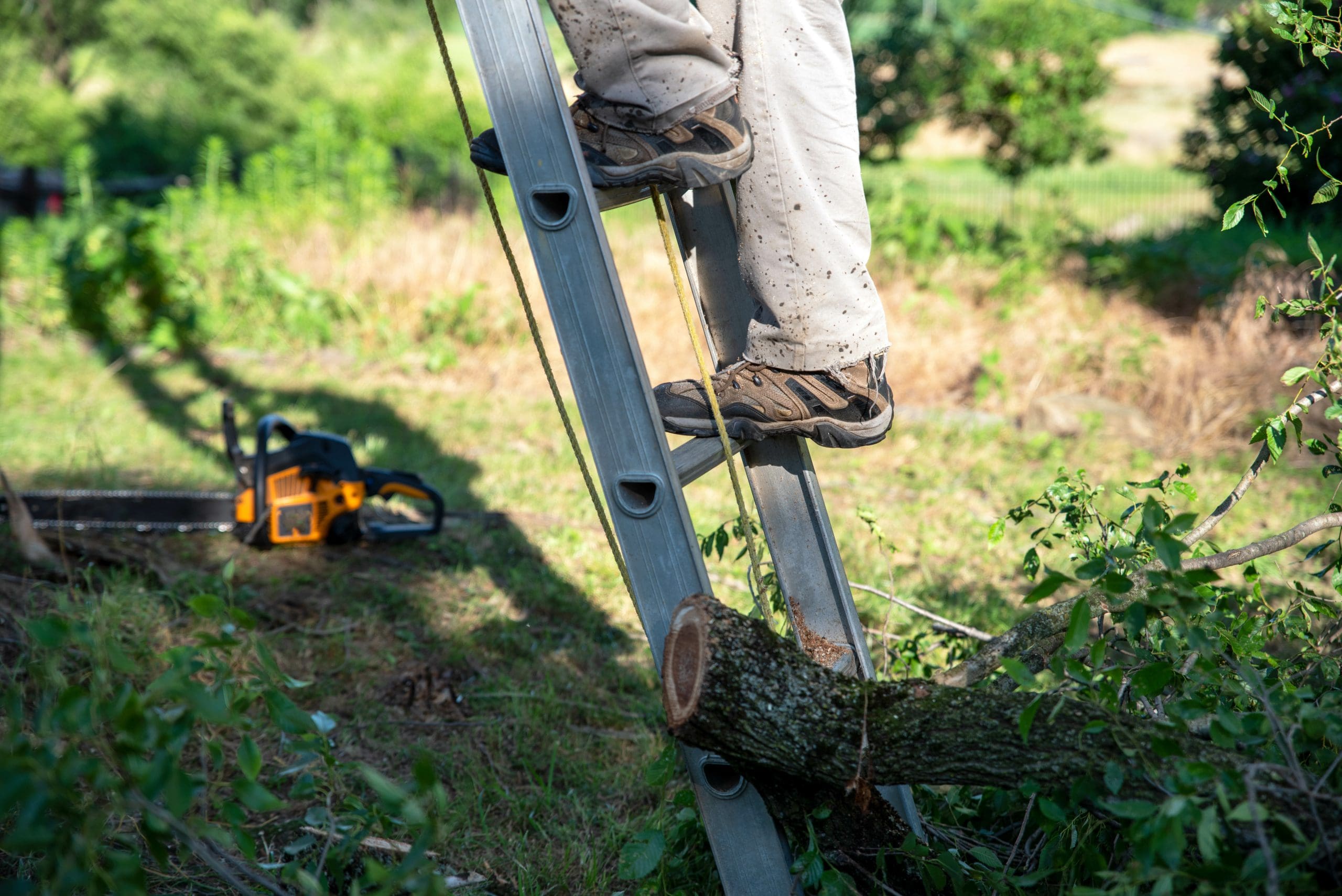
Ladders can be used for a number of tasks in the landscape industry, including pruning trees, cleaning gutters, installing holiday décor, or installing/maintaining interior plantscaping.
Even a fall from a relatively low height can result in painful and permanent injuries. According to OSHA, ladders are number four in the top 10 standards most frequently cited for violations across all industries for which OSHA standards apply, with 2,143 violations. It is estimated that $17.1 billion is spent on workplace falls from working at heights.
Factors that contribute to falls from ladders include sudden movement, lack of attention, improper climbing posture and not maintaining three points of contact.
Proper Precautions
One of the common ladder mistakes made is not choosing the right size ladder for the job. Take into account your work environment when choosing your ladder. For instance, if your team is working near electricity, do not use a metal or aluminum ladder.
Another feature is considering the height of the ladder, as it’s unsafe to use one that is too long or too short. For instance, the top three rungs of an extension ladder are not to be used for climbing.
Keep in mind that the advertised height of the ladder is the total length of the side rails. This does not take into account the reduced height due to the setup angles, or steps or rungs not suitable for standing or working from, and in the case of an extension ladder, the overlap between the sections.
Be mindful of the duty rating on the ladder as well as this is the total amount of weight the ladder can support. A taller ladder does not equal a higher weight rating. Take into account not only your own weight but the additional weight of your PPE and equipment/supplies being used.
Safety While Climbing
After selecting a ladder suited for the job, ensure it is placed on level ground. Use the 1:4 ratio rule — the base of the ladder should be 1 foot from the wall or have support for every 4 feet of vertical extension. To check this quickly, stand with your feet at the base of the ladder and extend your arms straight out. Your fingers should just touch a ladder rung.
Climbing seems straightforward, but failing to do so safely can result in slips and falls. Always face the ladder when climbing up or down. Pay attention to your surroundings and climb deliberately without sudden movements.
Always maintain three points of contact with the ladder while climbing, as this minimizes the chances of falling. Towlines, a tool belt or an assistant should convey materials so you can have your hands free as you climb.
When climbing back down, take care not to miss the final step of the ladder. Do not use a ladder when working alone.
Safety at the Top
Do not stand on the top step, top cap or straddle the top of the ladder. If you need to do this to reach your project, the ladder is not the proper length for the job.
Once you’ve reached the top of the ladder, continue to maintain three points of contact. Keep both feet firmly planted on the ladder with a hand or your knees resting on the ladder for stability. If you don’t keep three points of contact, you’re more likely to overreach.
Overreaching can make it more likely you’ll lose balance, so keep the center of your stomach between the ladder side rails.
Join NALP’s Safe Company Program today!

